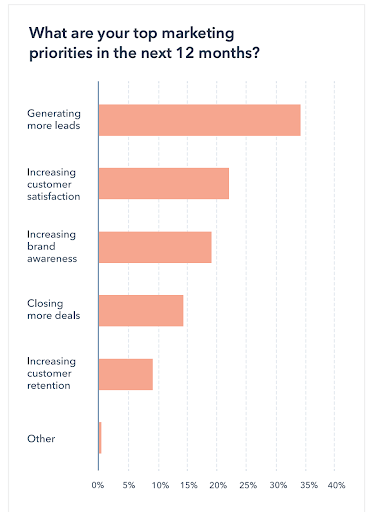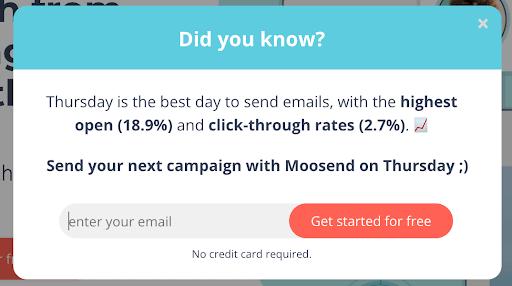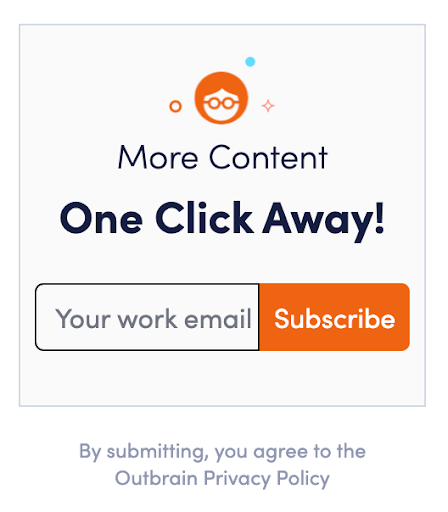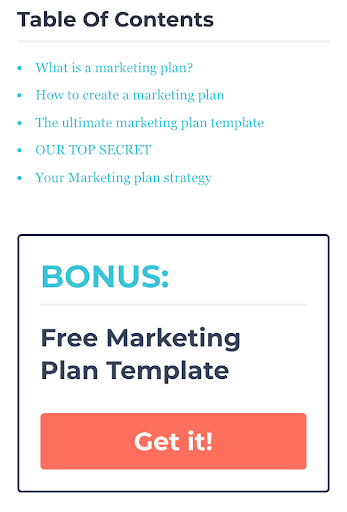How to Optimize Your Website for Qualified Leads

One of the most vital business goals for a B2B website is to generate leads. Even if a lead does not convert into a client right away, having their contact information in your database opens the door to future interactions and sales. That’s why marketers place lead generation as their top priority and goal.

For instance, a visitor to your website may opt-in to your email newsletter simply out of curiosity, with no intention of buying anything. However, after months of frequent email interactions that kept your brand at top of their minds, they ultimately convert.
Of course, for that fantastic long game to work, you need to first collect the leads, which is where lead capture optimization comes in. Essentially, you want to make the process as simple as possible for your users to convert into leads on various pages of your website.
There are a few tried-and-true strategies you should know, but testing what works for your audience is crucial. Consider the types of leads you’re looking for, how you’ll capture them, and how you’ll evaluate your lead capture success.
After you’ve created that framework, you can get serious about lead capture optimization. Continue reading to explore the different techniques that will take your lead generation to the next level.
Optimize forms for high-traffic pages
Sign-up forms are a quick and straightforward approach to capturing qualified leads. But it’s important to place them strategically on your website. Too many lead forms in the wrong places won’t leverage your web traffic and will be a waste of time.
Start by analyzing your website and identifying which pages receive the most traffic. Where do you acquire most of your leads? It might be from a page you don’t generally pay attention to.
Make sure to focus on pages that have a lot of traffic, and create interesting messages that will drive users to provide their personal contact information.

Forms may just ask for an email address, like the example above, or you can use forms that request more information, like the individual’s name, company name, job title, and more. Whichever style you choose, ensure that the form design matches or complements the look and feel of the website. This will ensure a seamless and enjoyable customer experience.
For example, suppose your analytics tool shows that many potential leads come from Facebook, where they click on inbound links to your website. In that case, your next step is to optimize the pages they’re viewing with content that sparks their interest. Add a hello bar or a pop-up to guide them through the next step of the journey. Remember that timing is everything, so ensure that you understand where and when your opt-in form should appear.
If this doesn’t seem to work, consider adding an exit intent pop-up for the users who want to leave your website. It may be a gentle push asking them to subscribe to your email list, or another tactic.
Leverage landing pages & email automation
A landing page is a tool dedicated to capturing and converting leads, so it’s an important element of your website and lead generation strategy.
Landing pages feature a form where visitors can submit their contact information (such as an email address or phone number) in return for something you’re offering. In 2022, there are several design trends and tactics for landing pages that can help you get ahead of the competition.
Have you ever visited an e-commerce site and been greeted with a “new visitor” discount? You receive the promised discount only after entering your email address. This is a persuasive lead-gen tactic that may persuade you to purchase if you were previously unsure.
Having several landing pages for different goals and campaigns is an excellent idea. According to HubSpot, businesses with over 40 landing pages generate five times more leads than those with only 1 to 5 landing pages.
Email automation works well as a complement to the landing page strategy. Thankfully, there is a wide range of affordable email marketing services suitable even for low-budget marketers. For example, you can set up an automated email campaign and send a “Welcome to our family” message to visitors who joined your email list via your landing pages.
A warm welcome email increases the rate of engagement among newly converted leads. It adds a crucial personal tone to the communication and helps build rapport with potential customers.
Pro Tip: Remember to include a compelling call to action in this email. Why? Because you want to encourage the lead to continue on their customer journey.
Here are some examples of effective CTAs:
- Click Here to Get Started
- Try [YOUR PRODUCT] For Free
- Get 10% off with [PROMO CODE]
Offer content upgrades or other incentives on specific blog posts
When a user finishes reading a blog article, guide them to another piece of content on your website. It might be another article on the same topic, a case study, or a research report. It could even be a webinar recording or YouTube video.
The trick is to make it gated content. This means that the reader has to provide some personal information in order to access the content. This is an important part of an effective lead generation strategy.
This may seem challenging but it’s really not that complicated. Take a look at your existing content and identify “gate-worthy” pieces. Then, add lead-gen forms to your sidebar, at the end of articles, or in pop-up messages inviting readers to enter their information and receive the content.

Search engine optimization meets lead generation
SEO is another tool in your arsenal for lead generation. High-quality content will help you to build the page authority you need to get your website to the top of Google’s search results.
Organic visitors who arrive at your website via search are more likely to be looking for answers to an issue you can solve. Many of these leads are of high quality and worth pursuing. Driving more of this quality traffic to your website lead forms should be a top goal.
Do keyword research on essential topics to your organization and write a series of blog entries to drive traffic to your site. Then, offer a content upgrade that adds more detail and useful information on the subject. Turn this content into a downloadable PDF that blog readers can access by entering their name, company, and email address.

Email the content PDF to everyone who enters their information, and follow-up with another email to help them maintain interest in your business.
Creating a content journey that is relevant, powerful, and helpful is a great way to capture leads and nurture them through the marketing funnel until they convert.
Create an assessment tool or quiz
Another great way to optimize your lead generation process is to create an assessment tool or other interactive content, such as a quiz.
Blog posts, videos, and other kinds of static content are all part of a successful lead generation strategy. But interactive elements, such as a poll or quiz, raise the stakes because they capture the user’s interest and curiosity and keep them actively involved with your content experience.
Make it necessary for individuals to fill out your lead generation form to reveal their results. You’ll not only acquire people’s information, but you’ll also be able to tailor your lead nurturing efforts depending on how prospects answered the quiz or finished the assessment.
An integrated quiz on your website may generate many leads if done correctly. Quizzes appeal to a big audience, have a long shelf life, and can be both amusing and participatory.
They pique your audience’s interest by asking captivating questions. That’s precisely how Ramit Sethi attempts to engage prospects, in the screenshot below:
Quizzes, polls, calculators, and tests may be added to various pages on your website, including product landing pages, blogs, and resources pages.
Use a live chat service
Live chat services are becoming more sophisticated, and more customers expect to engage with a chat experience when learning about a business. Without a live chat tool, you risk missing out on a significant lead source.
Explore your website to identify which pages your visitors spend the most time on and what are their primary questions. If you have sufficient development resources, implement live chat software on pages where clients need the most help or information.
This helps you gather and document data about their product demands while addressing their queries and providing a great customer experience. Plus, by leveraging the contact information about customers who interact on live chat, you can guide them through your marketing funnel with a follow-up email campaign, creating an additional lead generation workflow.
Track visitors and test elements
Tracking results and optimizing elements of your lead generation process is essential to success in the long run. We can’t emphasize enough how important this step really is.
With A/B testing, your click-through rates can improve dramatically. Testing the phrasing of your CTA, the structure of your landing page, the images or icons you’re using, and even the colors on the landing page, may have a significant influence.
If you have a CRM system in place, that’s a great starting point. However, even a free Google Analytics account comes with a useful tracking tool. Simply create a “goal” for each of your lead-generating pages.
The data will show you which aspects of your marketing strategy are most effective. Once you’ve figured out where your leads are being generated, evolve your marketing strategy to remove what’s not performing well, and optimize the promising parts for even better results.
Still, wondering how people interact (or don’t interact) with your site’s content or elements? While A/B testing may provide a lot of information, visitor tracking solutions can provide even more.
Mouse tracking and session recording are visitor monitoring technologies that allow you to see particular visitors’ movements on your site and detect friction spots that may be blocking conversions.
These tools don’t provide a conclusive analysis of what is and isn’t working on your site, but they can provide valuable qualitative data and insights when planning your lead-gen campaigns.
Let’s review
Marketing in a digital world is becoming more challenging every day for brands. Having the necessary strategies to get ahead of the competition is a must, and generating qualified leads is an excellent starting point.
Lead generation helps you guide potential customers to convert, and generates increased revenue. To do that, you need to build distribution lists, and to do that, you need landing pages and lead forms.
Once you’ve captured lead information, you can then embark on an automated email campaign for your lead nurturing flow.
Content upgrades, quizzes, and live chats are all excellent tactics to improve your funnel and help potential customers understand and connect with your brand. And to ensure the best results, you need to test these components and make data-driven decisions about how to optimize them and get more from your lead generation strategy. Getting leads is one thing; getting qualified leads is quite another. Implement these techniques today to optimize your website and build a powerful, high-quality lead funnel.


